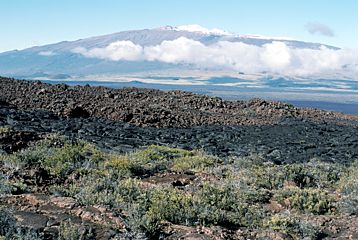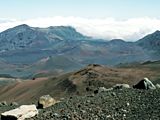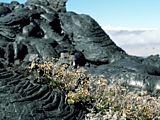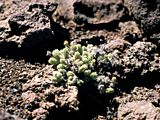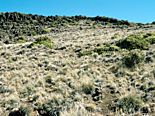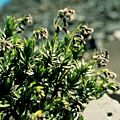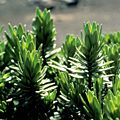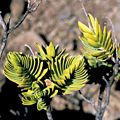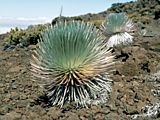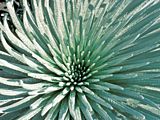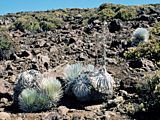Hawaii
Several thousand kilometres distant from the next continental land mass, the Hawaiian Archipelago is one of the most fascinating places on earth to "witness" evolution. Rare incidences of species arrivals and later differentiation into new species or subspecies are also characteristic for the alpine flora of Hawaii. There is comparatively poor species diversity, but there are also plants of outstanding appearance, including giant rosettes.
1 -
Mauna Kea with its snow cap (4205 m). Foreground: A lava flow and shrub size
Metrosideros polymorpha
(Myrtaceae).

3 -
Metrosideros polymorpha
(the "multi-statured", Myrtaceae), here as natural "bonsais" on fresh lava at 2700 m
elevation on Mauna Loa.
4 -
Tetramolopium alpinum
(Asteraceae) (Haleakala, 2750 m). See also
New Guinea.
5 -
Agrostis trisetum
-
Deschampsia nubigena
grassland with dwarf shrubs of
Styphelia
(Ericaceae),
Vaccinium
(Ericaceae),
Geranium
and
Dubautia
(Asteraceae) on Haleakala.
9, 10, 11 -
Dubautia af. menziesii
(Asteraceae) (3050 m). The genus
Dubautia
is one of the outstanding examples of evolution. Closely related species may differ a lot in
appearance, but some easily
hybridise,
indicating young evolutionary age.
